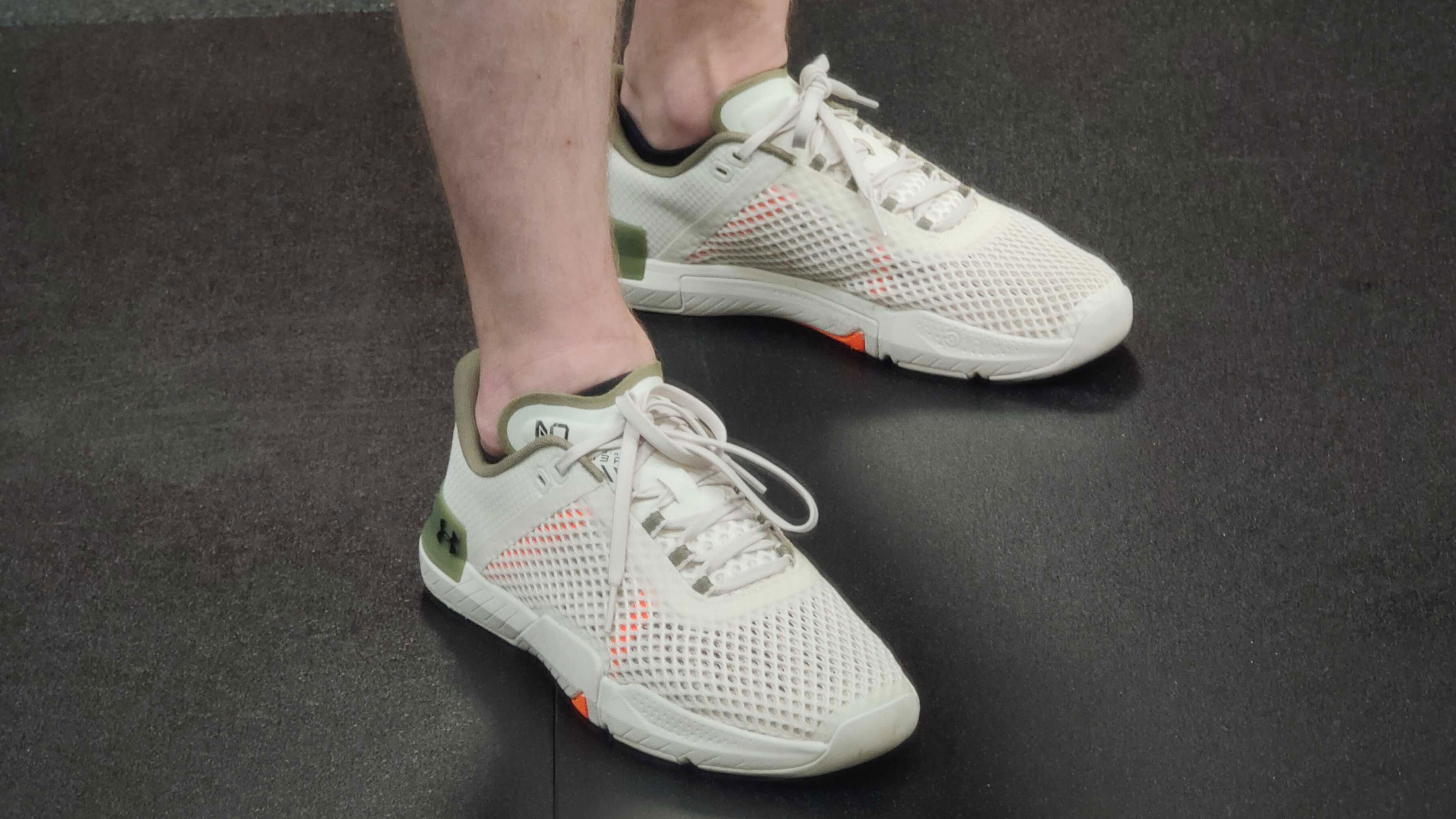I tried Under Armour's top gym shoes, but I still prefer my Vans
They’re amazing, but I wouldn’t buy them.

Recently, Under Armour sent me a pair of its best gym shoes, the Under Armour Tribase Reign 4, to test. They’re a really cool pair of cross-training shoes, adept for casual use in the squat rack and more demanding sessions in HIIT classes and the CrossFit box.
Nonetheless, I felt a little awkward. This email came a week after an article I wrote about my favorite pair of gym shoes: a decrepit old pair of Vans which have seen better days. No longer fit to wear with my favourite jeans, their flat base, thin sole and 0mm heel-to-toe drop makes them great for squatting in.
They’re much better for lifting weights than the best running shoes, which create instability while you lift due to balancing on thick, bouncy foam soles. Crucially for these tough times, those Vans mean there’s one less training shoe for me to buy, and this style of shoe is cheap to purchase if you don’t already have a pair of old Chucks, tennis or skate-style shoes to hand.
The Under Armour Tribase Reign 4, on the other hand, is a gym bunny’s best friend. They’re low and stable, like the Vans, but they also have lots of external structure on the outsole to ensure your foot has plenty of support, including an external heel clip and built-up rubber under the toe box. Speaking of, the toe box is wider than narrower shoes like the Vans, which means your feet, which naturally spread out to ‘grip’ the ground on big lifts, can behave more naturally.
It also has something else my Vans don’t have: cushioning. Even though the thick foam on running shoes is bad for lifting, a slender Micro G foam midsole means if you’re doing explosive movements, such as box jumps or burpees, you’ve got a bit of cushioning there for when your feet land back on the floor, but it doesn’t interfere with your other lifts. The built-up outsole makes your landing more stable, too, preventing slips.
I loved the Under Armour Tribase. I tried them over several sessions, squatting, deadlifting, and doing some explosive box-jumps as well as a bit of work on my gym’s local punchbag, and was really impressed with the stability they offered. The tongueless, breathable upper was more pleasant to wear than my restrictive canvas Vans, and I felt suitably stable as I squatted.
However, I didn’t notice much difference in my lifting performance. The wider toe-box didn’t impact me very much in any way that I noticed, and although on some occasions I felt reassured by the Tribase’s outsole, shifting my weight from right to left and not feeling my feet budge an inch, it made little difference to my regular lifting routine.
Sign up for breaking news, reviews, opinion, top tech deals, and more.
The biggest impact I had was when I switched things up for some explosive movements, doing box jumps at the tail-end of my workout. I had the reassurance of the foam midsole cushioning my impact against the hard gym floor, and it was comfortable instead of punishing. These are shoes that can do it all, and will really suit dedicated CrossFit athletes.
However, I’m not a dedicated CrossFit athlete: I’m an enthusiastic amateur lifter who goes to the gym to build a foundation for other movement-based sports like yoga, surfing, running or whatever I’m doing that week. I like the gym, but not enough to pay the exorbitant CrossFit box membership fees, or splash another $150, £115 or AU$195 on yet another training shoe.
Consequently, good as they are, I had to ask myself "If I wasn't testing them, would I buy them for myself?" and reluctantly came to the conclusion that no, I wouldn't.
If you do love the gym, it’s your main form of exercise, and you need that extra edge to hit the top of your WOD leaderboard, this is the shoe for you. But casual lifting enthusiasts will be able to get away with a cheaper, far less specialist shoe. At least it frees up some cash to spend on better workout headphones.

Matt is TechRadar's expert on all things fitness, wellness and wearable tech.
A former staffer at Men's Health, he holds a Master's Degree in journalism from Cardiff and has written for brands like Runner's World, Women's Health, Men's Fitness, LiveScience and Fit&Well on everything fitness tech, exercise, nutrition and mental wellbeing.
Matt's a keen runner, ex-kickboxer, not averse to the odd yoga flow, and insists everyone should stretch every morning. When he’s not training or writing about health and fitness, he can be found reading doorstop-thick fantasy books with lots of fictional maps in them.